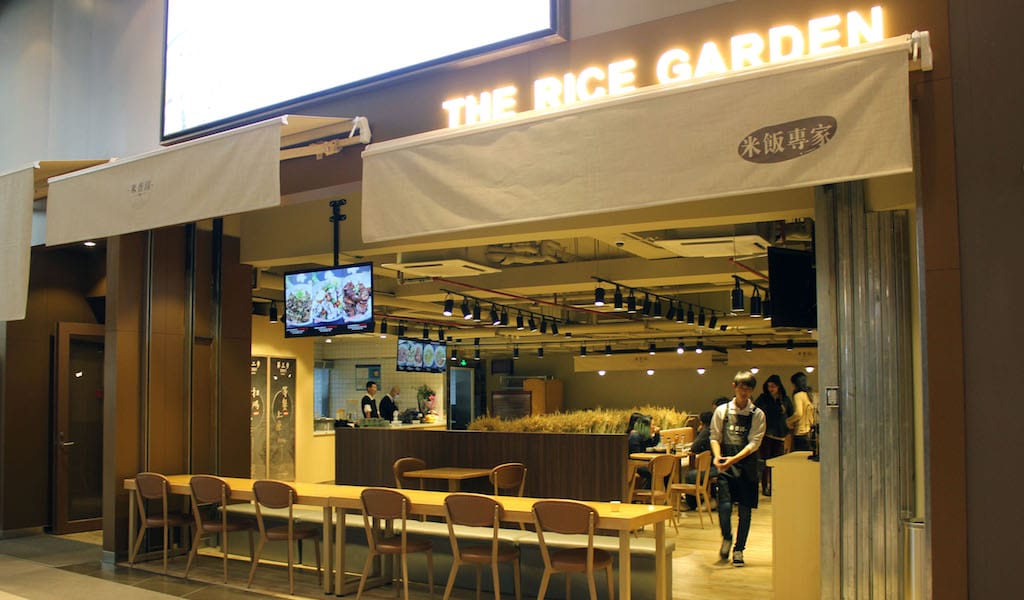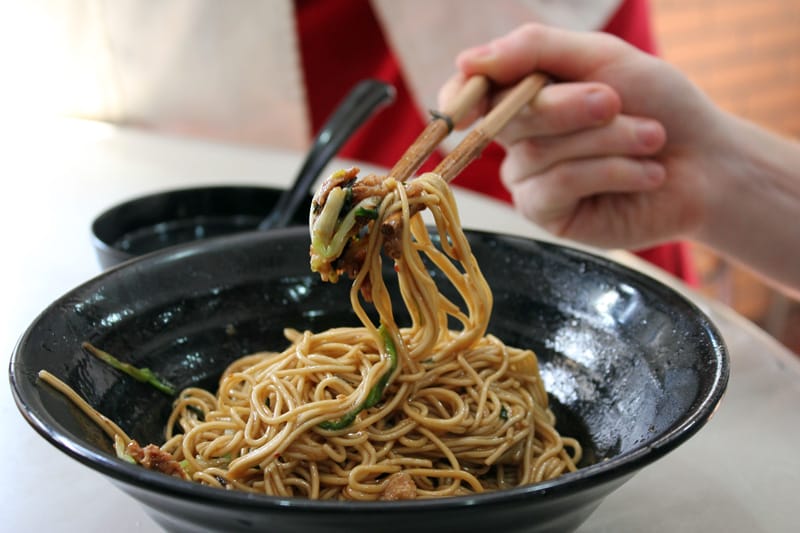When Chef Anthony Zhao was planning the relaunch of Mi Xiang Yuan, a home-style lunch spot popular with local office workers looking for a healthy set meal, he knew he had to get one thing right: the rice.
At the first alleyway restaurant just north of Xintiandi, Zhao sourced many of his ingredients for his Shanghainese bento boxes from family members’ farms. These small operations used organic techniques, although they were too small-scale to obtain official certification.
But high demand for his set meals has made sourcing from family farms impossible. So while updating the menu for the latest Mi Xiang Yuan, Zhao approached sourcing ingredients with the same standards – even if it wasn’t going to come from a family member’s farm, it still had to be of the highest quality. This was particularly true for the rice, which can make or break a restaurant in Shanghai (and of special importance for a restaurant whose English name is The Rice Garden). He and his staff sampled over 30 varieties before finally settling on Wuchang rice from Heilongjiang.
The grains from this area are famous and often touted as the best short grain rice in the country, thanks to the area’s loamy soil and abundant rainfall. Zhao likes them for their luster, fragrance and tacky bite – they are never mushy. To ensure each bowl comes out perfectly, he invested in top-of-the-line Panasonic rice cookers that do a lot of the heavy lifting in a restaurant where a bowl of rice is served with practically every order.
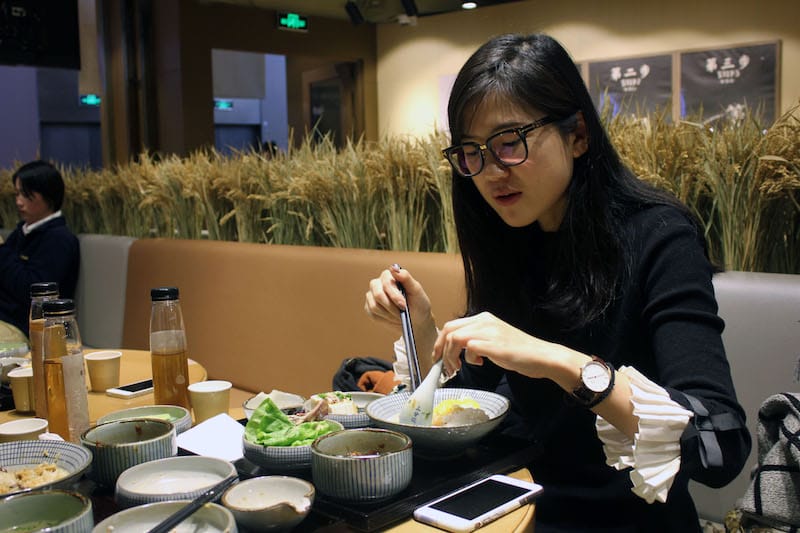
The move toward high-tech is not just in the kitchen (which also has Rational programmable ovens to ensure consistency in the ‘fresh’ fast food setting). The alleyway restaurant has moved out of its residential neighborhood and into the basement of a mall (a common trend in Shanghai as rapid demolition of old neighborhoods continues), where each seat is equipped with a QR code for ordering and payment. Once you sit down and scan, you never have to leave your seat to order or grab your food – it is the inevitable next step in the WeChat revolution that is shaping the way China’s restaurants operate. Delivery on Meituan is also available for those lucky enough to live or work within the radius.
Put all those ingredients together, and you have a fast casual restaurant that exceeds the high expectations it set for itself with the original. The house specialty Lǔ ròu fàn (卤肉饭) is still on the menu where it comes topped with pork floss. New menu items branch out beyond Shanghainese cuisine, like a very spicy bullfrog (火爆藤椒牛蛙Huǒbào téng jiāo niúwā) paired with fried puffs of wheat gluten, and chicken leg teriyaki with onsen egg (照烧鸡腿温泉蛋 Zhào shāo jītuǐ wēnquán dàn). The former uses a whole frog to ensure there’s plenty of meat in each bite, while the latter has crispy skin stretched over bewilderingly tender chicken – plus an egg poached at 63 degrees Celsius for 46 minutes to create the perfect texture.
Rice can make or break a restaurant in Shanghai
For those looking for a taste of Shanghai, there’s still plenty to try. Zhao has taken the red-braised pork (红烧肉Hóngshāo ròu) he famously made for both chefs Rick Stein and Eddie Huang on their respective TV shows to the next level. On the menu it’s called “Amazing Fermented Tofu Pork Belly” (了不起腐乳肉 Liǎobùqǐ fǔrǔ ròu), and it’s apparently so good, it was sold out both times we’ve gone. The guy next to us who ordered the last one assured us it was good, but wasn’t giving up a mouthful. The secret is adding in extra furu – or fermented tofu – to give it an umami boost.
All the sets come with a bowl of Wuchang rice, soup, a side, like century egg and soft tofu (皮蛋豆腐 Pídàn dòufu) or garlicky cucumber (蒜汁拌豆腐 Suàn zhī bàn dòufu), plus a drink. Go for the house specialty wintermelon tea (冬瓜茶 Dōngguā chá).
Zhao’s push to combine new technology with the quality ingredients he’s always served means there might be more Mi Xiang Yuans popping up around town. Based on the crush of office workers and delivery guys in the restaurant during lunchtime, the demand is already there.
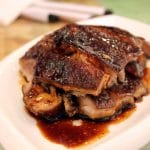 February 19, 2015 Guang Ming Cun
February 19, 2015 Guang Ming Cun
On one of Shanghai’s busiest shopping streets, amidst the glittering Tiffany & Co, […] Posted in Shanghai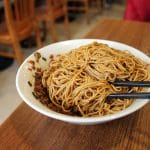 January 28, 2013 Jian Guo 328
January 28, 2013 Jian Guo 328
In Shanghai, there’s a time and a place for taking part in the city’s rough-and-tumble […] Posted in Shanghai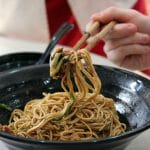 August 28, 2012 Lao Difang
August 28, 2012 Lao Difang
Does anyone say “use your noodle” anymore? Our grandparents used to admonish us with […] Posted in Shanghai
Published on January 02, 2018
Related stories
February 19, 2015
ShanghaiOn one of Shanghai’s busiest shopping streets, amidst the glittering Tiffany & Co, Piaget and Apple stores, Guang Ming Cun is housed in a nondescript four-story building. Glass displays in front offer a glimpse of the braised and dried meats for sale, and around the side you can peek in to watch flaky meat pastries…
January 28, 2013
ShanghaiIn Shanghai, there’s a time and a place for taking part in the city’s rough-and-tumble street food scene, but sometimes you want to eat out knowing that your bowl of noodles will not accidentally become someone’s ashtray or that you don’t have to elbow an elderly lady out of the way for a seat. Somewhere…
August 28, 2012
ShanghaiDoes anyone say “use your noodle” anymore? Our grandparents used to admonish us with that idiom when we didn’t think a situation through, but the phrase seems to have mostly gone out of fashion along with polyester suits. However, deep in the former French Concession, one esteemed food vendor is definitely using her noodle to…







































